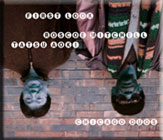Home » Jazz Articles » Album Review » Roscoe Mitchell/Tatsu Aoki: First Look: Chicago Duos
Roscoe Mitchell/Tatsu Aoki: First Look: Chicago Duos
Mitchell possesses a singular talent which allows him to cross genres seamlessly. Still, his arsenal of extended techniques is always a means to an end, never an end in itself. As likely to aim beyond conventional musical conceits—eliciting sounds more color than lyric—as he is work within their confines, his selfless approach to creating aural landscapes remains consistently musical. Nowhere is this more evident than on First Look: Chicago Duos, where he and his collaborator, bassist Tatsu Aoki, evolve nine pieces best defined as spontaneous compositions, rather than free improvisations.
Mitchell's array of reeds and flutes are enough to give the duo considerable breadth, but the additional use of hand percussion further enhances the music's possibilities. The similarly themed "In and "Out, which bookend the disc, both start with Mitchell and Aoki on percussion alone, with Mitchell continuing on while Aoki switches to bass, playing a gently hypnotic ostinato. Mitchell finally turns to flute for an equally soft solo, but he ultimately reverts back to percussion to see both pieces to their delicate conclusions.
The duo's way of moving in and out of abstraction to passages with a distinct impression of form gives the material its sense of composition. While their music is inherently less dense than the Art Ensemble of Chicago's, Mitchell and Aoki's ways of evolve seemingly random thoughts into cogent ideas are not entirely dissimilar. At fifteen minutes in length, "The Journey is the longest piece on the disc and, like extended Art Ensemble pieces, it covers a lot of ground, while at the same time remaining completely focused. Following a four-minute percussion duo, Aoki enters with an ostinato that almost swings, with Mitchell's alto supporting that suggestion. Mitchell's control is remarkable—at times sounding more like raspy flute than saxophone.
"Number Five Wings Place, with Mitchell strictly on percussion, features Aoki's remarkable bowing technique. Like classical bassist Stefano Scodanibbio, whose solo performance at this year's International Festival Musique Actuelle Victoriaville was a clear highlight, Aoki manages to draw out a remarkable range of subtle harmonics, making the eight-minute piece thoroughly compelling.
Throughout, Mitchell and Aoki explore all manner of dynamic range. Yet despite its unequivocal freedom, First Look rarely becomes harsh or jagged. While those looking for solid structure may find this recording too extreme, it remains a relatively attractive entry point for those wanting to explore imaginative free improvisation that doesn't aggressively assault the senses.
Visit Tatsu Aoki on the web.
Track Listing
In; East Side Easy; Number Five Wings Place; The Journey; Glide; Dot; Journey for the Cause; Yoshihashi; Out.
Personnel
Roscoe Mitchell
saxophoneRoscoe Mitchell: reeds, flute, percussion; Tatsu Aoki: acoustic bass, percussion.
Album information
Title: First Look: Chicago Duos | Year Released: 2005 | Record Label: Southport Records
< Previous
Passions and Prayers: Sextet in Homma...
Comments
About Roscoe Mitchell
Instrument: Saxophone
Related Articles | Concerts | Albums | Photos | Similar ToTags
Concerts
For the Love of Jazz
 All About Jazz has been a pillar of jazz since 1995, championing it as an art form and, more importantly, supporting the musicians who create it. Our enduring commitment has made "AAJ" one of the most culturally important websites of its kind, read by hundreds of thousands of fans, musicians and industry figures every month.
All About Jazz has been a pillar of jazz since 1995, championing it as an art form and, more importantly, supporting the musicians who create it. Our enduring commitment has made "AAJ" one of the most culturally important websites of its kind, read by hundreds of thousands of fans, musicians and industry figures every month.




















